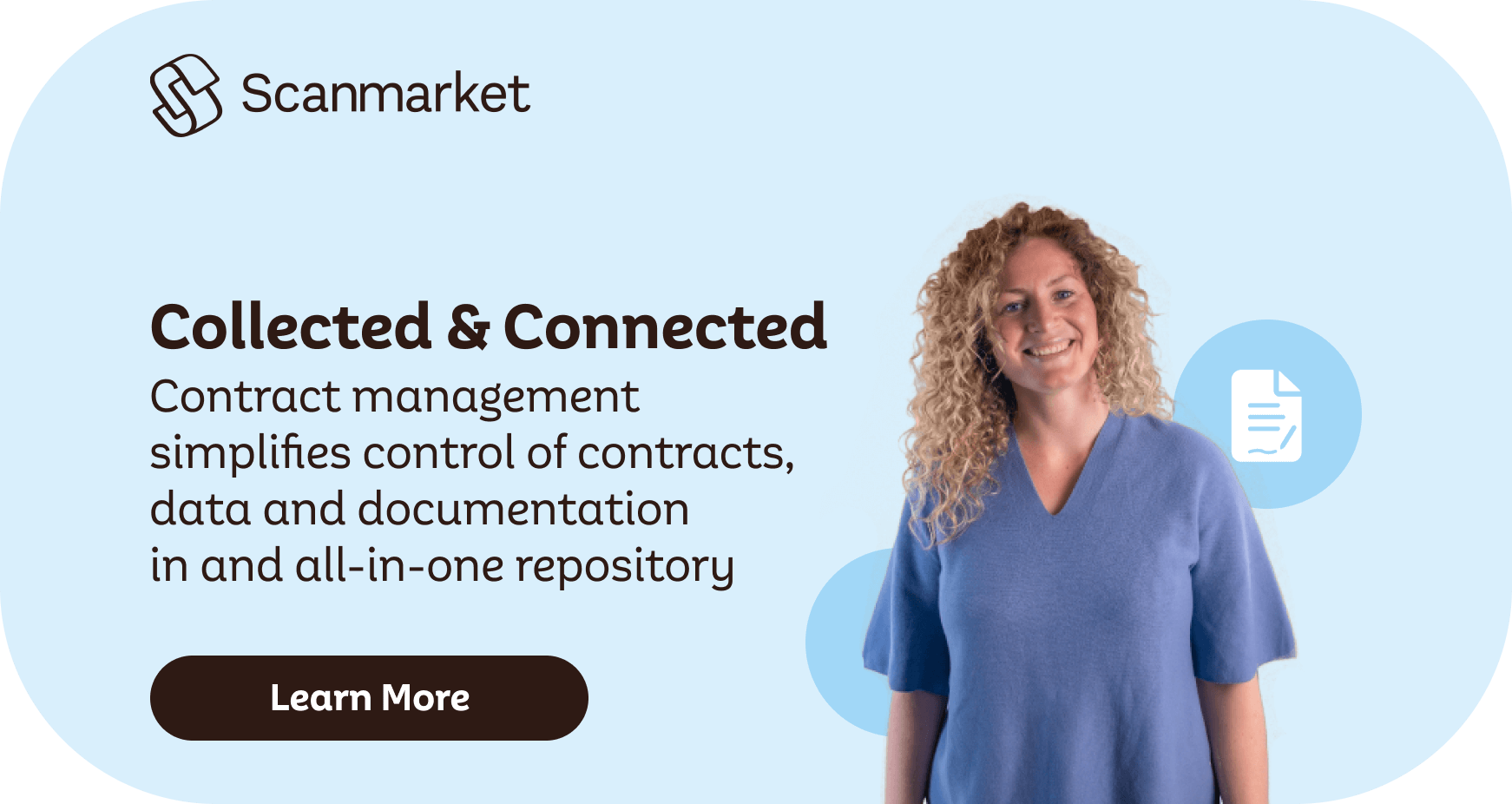Contracts are central to the operation of all business, regardless of size or industry. If you are trading, then you are building a collection of legal agreements over time and each of those agreements needs to be managed.
The proper management of legal agreements can allow businesses to maximize profit and identify further commercial opportunities, in addition to enabling a significant reduction in risk. However, it is not just businesses that accumulate contracts – many different types of organizations use legal agreements in their function and governance, including charities, non-profits, and public sector enterprise. These types of operation also need to manage contract collections in order to ensure cost-effectiveness across all day-to-day functions, as well as enabling comprehensive risk reduction.
For these reasons, Contract Lifecycle Management software is used by a broad and diverse range of organizations. Regardless of differences – in size and in purpose – these different types of organizations share a need for consistency and accuracy in Contract Management processes, and this is reflected in the way Contract Lifecycle Management software is implemented within the organizational structure.
CLM in Organizations
Every organization is different and so some will use Contract Lifecycle Management software in ways that are not necessarily required by others. There is lots of common ground, however, simply because the structure of most organizations will require similar areas of administration in order to function, and each of these areas will use Contract Lifecycle Management software for different reasons.
Legal Departments
Many organizations – particularly those that are large in size, or that operate across multiple territories – have in-house Legal Departments and, as the name suggests, this is the team that is most closely involved with the contract collection of the operation. As the legal experts, the Legal Department will have overall responsibility for the content of the contracts pertaining to the organization, which means overseeing the drafting and approval processes, as well as dealing with areas of potential and actual dispute.
Legal teams will therefore use Contract Lifecycle Management software to create standardized templates and clauses for use throughout the enterprise, as well as automated workflows for the reduction of risk and increase of efficiency. Reporting functions will also allow the Legal team to monitor the timely fulfilment of contractual obligation and the levels of compliance being achieved across the organization.
Finance
The work of the Finance Department or team is closely related to contracts, regardless of the commercial status of the organization. For sales-oriented operations, the Finance team will require visibility to the detail of contracts in order to facilitate billing and forecasting of profits, loss and associated tax implications. This visibility is also required for effective payroll services, monitoring of assets, and reporting on stakeholder interests.
The specific needs of Finance teams mean that the reporting functions of Contract Lifecycle Management software are of particular importance. Using contract metadata, customized reports can support the accurate oversight of all financial aspects of the organization, ensuring that the generation of actionable data leads to the most financially advantageous decisions.
Human Resources
Human Resources teams engage with contracts and legal agreements on a daily basis. In addition to employment contracts of varying complexity, it is the job of the Human Resources Department to facilitate non-disclosure agreements and non-compete clauses, along with any additional agreements or settlements arising from mediation of employment disputes. There is also an element of compliance oversight required of Human Resources teams, in terms of the management of continued professional development for all staff, as stipulated in employment contracts.
Contract Lifecycle Management software allows Human Resources teams to create standardized employment contracts based on the documents and clauses generated and approved by the Legal team. This includes agreements for non-disclosure and non-compete clauses. Customised reporting allows for visibility into compliance, and automated workflows ensure that contract reviews remain on schedule – reducing risk and increasing efficiency throughout the organization.
Procurement
While procurement is a vital part of any organisation, it also represents a significant vulnerability in terms of security and efficiency, so risk management is an essential consideration for the Procurement team. This is because the process of procurement is based in supplier, or Third Party relationships, which is governed by contracts and legal agreements.
With an emphasis on risk mitigation, Procurement teams benefit from the centralized repository that forms the core feature of Contract Lifecycle Management software. This unified data pool, combined with powerful customized reporting tools, allows for teams to make procurement decisions that are based on data and historical evidence. In addition, the software enables Procurement teams to process supplier terms in a standardized way, thereby ensuring the necessary levels of compliance. Automated workflows also support the accurate and consistent oversight of Third Party contract milestones and renewals, so that every opportunity for risk assessment and renegotiation is maximized.
Sales
While every organization will deal with contracts at some point, not all organizations will have a Sales Department. For those that do, the Sales Department is a core generator of profits and revenue, which constantly utilizes contracts to achieve commercial success for the overall operation. The Sales Department is the team that is on the ground, making the contacts and securing deals for the provision of goods or services, which means creating accurate contract documentation quickly, and efficiently.
Contract Lifecycle Management software is the ideal solution for Sales teams because it allows for immediate, secure access to standardized terms and templates. Personnel can therefore proceed with the pursuit of commercial opportunities with the confidence provided by documentation created by the Legal Department. Automated workflows also ensure that approval processes happen quickly and smoothly, with risk fully minimized.
Why Use CLM Software
Approaching the management of a contract in terms of its lifecycle is a basic best practice principle for effective Contract Management. It ensures that the entire administrative rhythm of the agreement is accounted for in such a way as to minimize risk as far as possible. Contract Lifecycle Management software is built with this approach in mind, using Machine Learning and secure access protocols to deliver a comprehensive digital solution for all users, whatever their goal, and whichever industry they operate within.
-
Centralized Repository
-
At the heart of Contract Lifecycle Management software lies the centralized repository, containing all contract documentation and data. With consistent and accurate use of metadata tagging, this feature allows for data analysis at all levels of granularity. It also allows for the creation of a library of standardized templates and clauses featuring pre-approved language, to speed up the contracting process.
-
Permission-Based Access
-
The browser-based design of the platform facilitates permission-based access. This means that authorized personnel can access the data required from any web-enabled device in any internet-connected location – speeding up the contracting process through collaboration while ensuring that all activity is secure, tracked and logged. As a result, the sales cycle is shortened, compliance is increased, and accountability and transparency are maintained.
-
Customized reporting
-
The centralized repository feature turns the contract collection into a fully secure, searchable data source, which means that the entire contracting history can be mined for actionable insights. This information can then be used to inform strategic decisions around current and future operations, potential Third Party relationships, and unexplored business opportunities. It can also be used to generate information in support of Finance operations and Human Resources.
-
Automated Workflows
-
Not only are automated workflows essential for efficiency and accuracy within the organization, they are also vital in terms of compliance. Like the reporting feature, automated workflows use Machine Learning to create a process that reduces the need for human input, thereby reducing risk of human error. Automatically alerting the right personnel to the right task at the right time ensures that contractual obligations are fulfilled on time, while new opportunities are surfaced and actioned, as appropriate. At the same time, accountability is maintained through the tracking of actions and responsibilities. This high degree of automation helps to emphasize compliance throughout the operation.
-
Cost-Effectiveness and Performance Monitoring
-
Even when profit is not the goal of an organization, cost-effectiveness is required. Contract Lifecycle Management software creates efficiencies within administrative processes that result in increased cost-effectiveness. This improves the bottom line for commercial operations and allows charities, non-profits and public sector enterprises to function at the most optimal, accountable level. At the same time, Contract Lifecycle Management software delivers the means to monitor the performance of both contracts and the organization as a whole, through the combination of data centralization and customized reporting with a high degree of automation.
The benefits of this whole-scale cost-effectiveness and performance monitoring are supported by the green credentials of Contract Lifecycle Management software – further enhancing the eco-conscious status of every organization.













